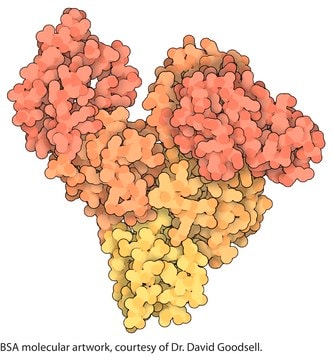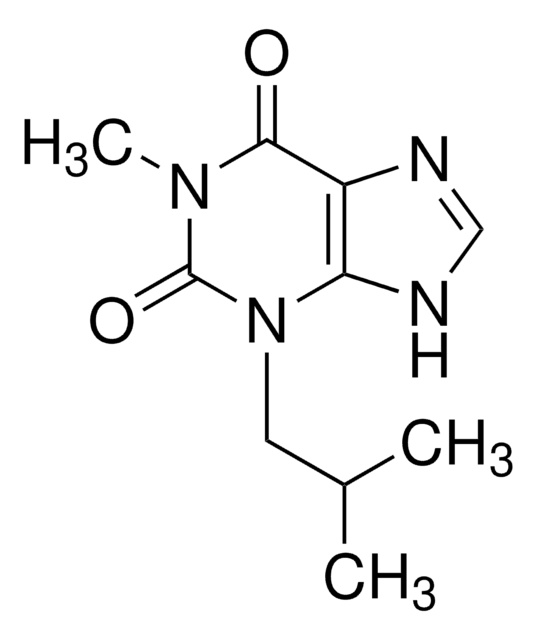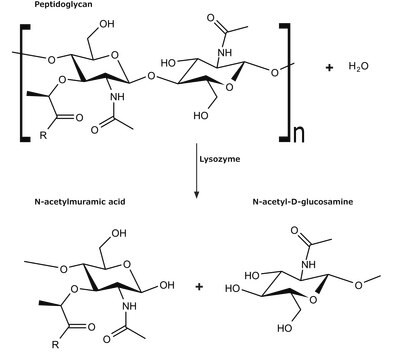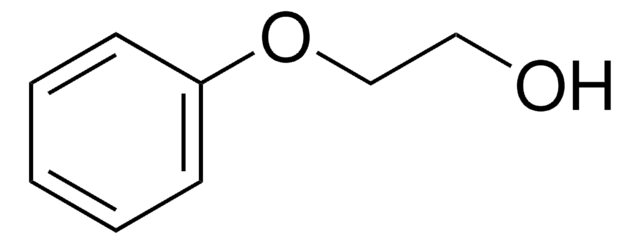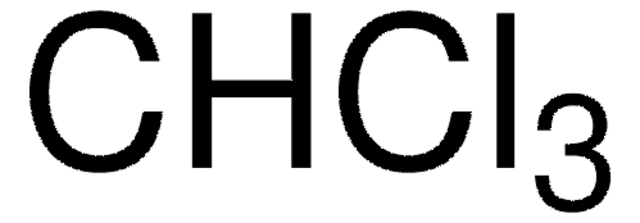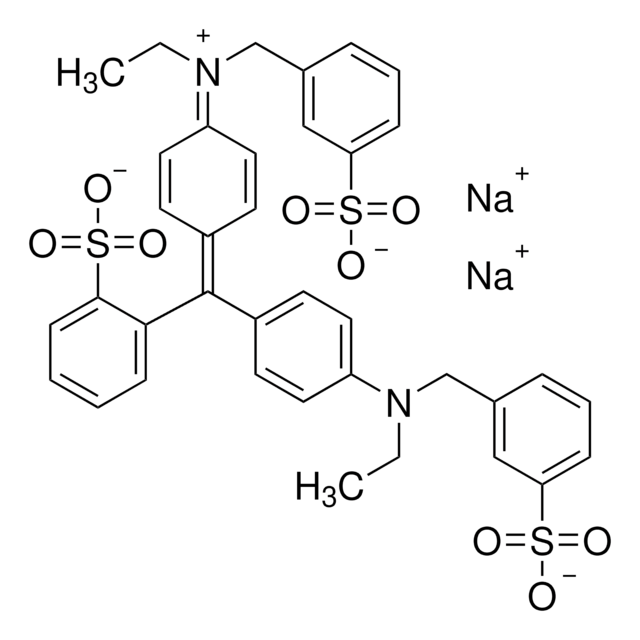추천 제품
Grade
analytical standard
Quality Level
기술
HPLC: suitable
gas chromatography (GC): suitable
mp
~148 °C
응용 분야
forensics and toxicology
pharmaceutical (small molecule)
형식
neat
SMILES string
CS(O)(=O)=O.CCOC(=O)c1cccc(N)c1
InChI
1S/C9H11NO2.CH4O3S/c1-2-12-9(11)7-4-3-5-8(10)6-7;1-5(2,3)4/h3-6H,2,10H2,1H3;1H3,(H,2,3,4)
InChI key
FQZJYWMRQDKBQN-UHFFFAOYSA-N
유사한 제품을 찾으십니까? 방문 제품 비교 안내
일반 설명
Ethyl 3-aminobenzoate methanesulfonate salt is a synthetic benzocaine derivative that belongs to the class of ester-type anaesthetics, widely used in aquacultures.
애플리케이션
Ethyl 3-aminobenzoate methanesulfonate analytical standard can be used as follows:
- Preparation of an anti-TMS monoclonal antibody (mAb) for the analysis of tricaine in fish samples using a lateral-flow immunochromatographic strip (LF-ICS) method
- Modified QuEChERS-based sample extraction of tricaine methanesulfonate from blood, muscle, and liver samples obtained from carp fish for its analysis by high-performance liquid chromatography-tandem mass spectrometry (HPLC-MS/MS)
- Multi-residue detection of tricaine mesylate and malachite green in aquaculture water, fish, and shrimp samples using tricolor immunochromatographic test strip with double test lines (TS-DTL)
- Analysis of water samples for MS-222 using solid phase extraction for sample treatment and liquid chromatography/tandem mass spectrometry (LC-MS/MS) for determination
기타 정보
Refer to the product′s Certificate of Analysis for more information on a suitable instrument technique. Contact Technical Service for further support.
신호어
Warning
유해 및 위험 성명서
Hazard Classifications
Aquatic Chronic 3 - Eye Irrit. 2 - Skin Irrit. 2 - STOT SE 3
표적 기관
Respiratory system
Storage Class Code
11 - Combustible Solids
WGK
WGK 3
Flash Point (°F)
Not applicable
Flash Point (°C)
Not applicable
개인 보호 장비
dust mask type N95 (US), Eyeshields, Gloves
이미 열람한 고객
Wouter Koole et al.
Disease models & mechanisms, 7(7), 929-936 (2014-02-04)
Mosaic analysis, in which two or more populations of cells with differing genotypes are studied in a single animal, is a powerful approach to study developmental mechanisms and gene function in vivo. Over recent years, several genetic methods have been
Khairul Syahputra et al.
PloS one, 14(6), e0218630-e0218630 (2019-06-21)
Infection of rainbow trout with the parasitic ciliate Ichthyopthirius multifiliis induces differential responses in gills, skin and spleen. A controlled experimental infection was performed and expression of immune-relevant genes in skin, gills, and spleen were recorded by qPCR at day
Robert J Evans et al.
PLoS pathogens, 15(3), e1007597-e1007597 (2019-03-29)
Cryptococcus neoformans is one of the leading causes of invasive fungal infection in humans worldwide. C. neoformans uses macrophages as a proliferative niche to increase infective burden and avoid immune surveillance. However, the specific mechanisms by which C. neoformans manipulates
Monica Bonetti et al.
PloS one, 9(4), e94884-e94884 (2014-04-17)
The PTPN11 (protein-tyrosine phosphatase, non-receptor type 11) gene encodes SHP2, a cytoplasmic PTP that is essential for vertebrate development. Mutations in PTPN11 are associated with Noonan and LEOPARD syndrome. Human patients with these autosomal dominant disorders display various symptoms, including
Jens Tiefenbach et al.
Disease models & mechanisms, 11(9) (2018-09-02)
Current peroxisome proliferator-activated receptor (PPAR)-targeted drugs, such as the PPARγ-directed diabetes drug rosiglitazone, are associated with undesirable side effects due to robust agonist activity in non-target tissues. To find new PPAR ligands with fewer toxic effects, we generated transgenic zebrafish
자사의 과학자팀은 생명 과학, 재료 과학, 화학 합성, 크로마토그래피, 분석 및 기타 많은 영역을 포함한 모든 과학 분야에 경험이 있습니다..
고객지원팀으로 연락바랍니다.

